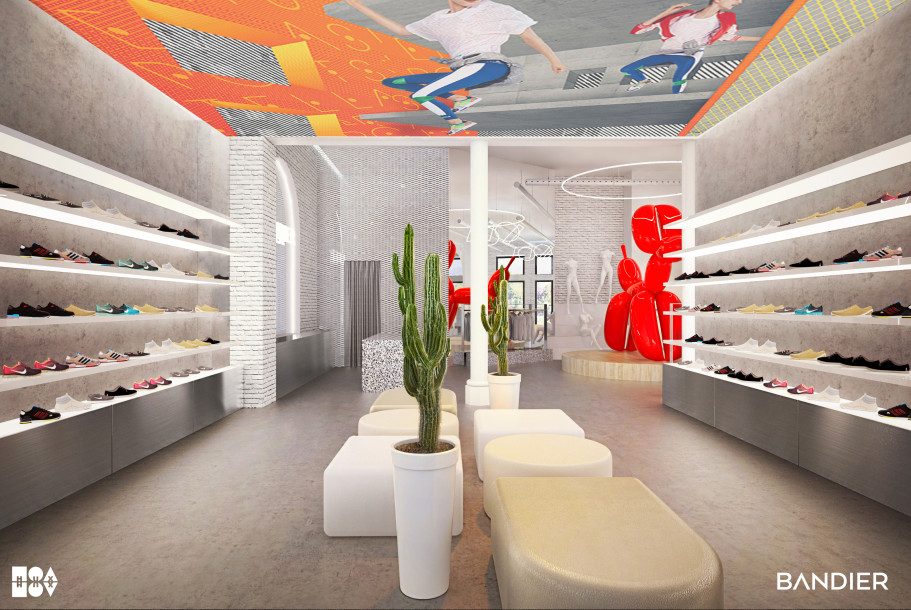

One of the boldest real estate deals in the Big Apple was recently inked by an athleisure shop that made a name for itself selling $300 leggings in tony Southampton, LI.
In August, 5-year-old Bandier is opening a massive 27,500-square-foot flagship in NoHo — about the size of a fitness center — that will not only sell its pricey duds from $68 crop tops to $98 sweatshirts and $108 yoga pants — but will also feature a fitness studio, a health-focused cafe and sneaker shop.
A second flagship will open simultaneously in Los Angeles, bringing the number of Bandier boutiques to seven.
“We think we have an opportunity,” said co-founder Neil Boyarsky, who owns the business with his wife, Jennifer Bandier, a former music executive like her father, Martin. “You have to roll the dice and take some chances.”
After raising $10 million last fall led by Hong Kong-based investor Adrian Cheng — whose family owns real estate and retail in China — Bandier is already eyeing other markets, like Chicago and Boston, for flagships.
As the athleisure trend continues its march, with fashion sneakers and body-hugging spandex gear becoming ubiquitous, Bandier is riding the wave led by 500-pound gorilla Lululemon, whose shares spiked 15 percent on Friday after reporting that comparable sales in its 400 stores rose 20 percent in the most recent quarter.
Bandier’s growth was fueled in part by its celebrity clientele, including the Kardashian sisters, Liv Tyler, Jennifer Aniston, Emma Stone and Bella Hadid, who have all been spotted either wearing its apparel or taking a fitness class in its studios.
But celebrities are only part of the story.
Bandier’s existing stores, including in The Americana in Manhasset, Long Island, and in Dallas, are generating comparable sales growth of more than 20 percent, according to Boyarsky.
“There will always be some market for this kind of apparel, but whether this growth is sustainable over time remains to be seen,” said retail analyst Craig Johnson, president of Customer Growth Partners.
There has already been a slight dip in the performance wear sector’s growth from the high teens to about 12 percent — not including sneakers — according to Johnson.
In the meantime, Bandier is betting that its mix of food, exercise and apparel will draw a steady stream of customers through its doors.
Its list of customer amenities ranges from moisturizing face masks to showers in its fitness studios to a treadmill in the sneaker department for test runs.
Bandier recently launched four private-label brands that will occupy up to 20 percent of the sales floor this year.
“Our revenues have exceeded our expectations by a long shot,” Boyarsky said, declining to disclose Bandier’s sales.